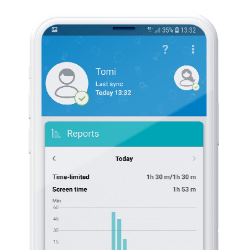TMI Alert: How can oversharing impact your future?
In our present digital age, where social media platforms are a hub for connection, it's crucial to understand the implications of oversharing, particularly for our kids.
A hoax is a false and fabricated story, but one which claims to be true. Sometimes it can start just as an April Fool’s message; other times it can lead to serious consequences that might damage somebody’s life or health. For instance, if a story claimed that something causes cancer or hurts people when in fact it does the exact opposite.
Even educated adults sometimes struggle to spot hoaxes and fake news. So how can we expect our kids to do it?
Back in the day, your grandparents might have unknowingly spread fake stories or urban legends about some family member’s adventures and experiences. There was simply no way to check grandpa’s war, hunting or fishing tales. But most of these stories would have stayed only within your family.
With the emergence of email, hoaxes and fake news started to spread nationwide and even worldwide. The rise of social media means misleading information can now go viral even more rapidly. Witness, for instance, the ‘momo’ or ’Blue Whale’ challenges that frightened parents around the globe. The latter started in Russia and went truly global. It soon spread to several European countries, India and the United States.
Why do hoaxes and fake news exist?
There are several reasons why hoaxes and fake stories exist. The less harmful ones can start as a prank: the internet just gives them more life. The goal of the more elaborate ones is simply to make money. If you help share a fake news website, the owner of that site can make more money from online ads or by selling products that claim to offer almost magical results. Such claims are usually unproven, of course. There’s plenty of misleading material online; liking, sharing or engaging such content on social media only helps to amplify it.
People who have less experience with the internet – like children or senior citizens – might have a more difficult time spotting hoaxes and fake news. There is no reason not to talk about this topic with your children. Do not wait for another hoax to spread before you warn your family: get ahead of the topic before your children can even have the opportunity to fall victim to it.
So how do you help them? The advice offered in the list below won’t catch every hoax, but it will provide plenty of warning that you might be dealing with one.
1. Help your kids to check the source
Teach your children to always look at who has shared or published a specific story. How is the story written? Is the language sensational, or full of loaded terms? Creators of these stories use certain words to evoke feelings like shock, terror or sorrow. This encourages the reader to switch off the rational part of their brain and act without thinking. Try to encourage your kids to always ask for evidence.
Even serious media outlets can sometimes publish incorrect information. Teach your family to ask for numbers, studies and information about why a claim is true.
2. Examine the evidence
Most shared hoaxes and fake news always include some visual ‘proof’, like a picture or a video. Show your kids how to zoom into an image and look for visual clues like street or shop signs, car plates or street ads. If a viral story claims to be from Israel but the street signs are in Spanish, it’s probably fake.
Another great tool is reverse image searching. There are several search engines and dedicated websites where you can simply upload or paste a link to an image, and the results show you where on the internet the picture has been used before. Sometimes the result will lead you directly to a website that collects information on hoaxes and fake news.
3. Tune your scepticism antennae
Most parents want their kids to behave well, doing what they or other responsible adults say. But before you allow your kids to use the internet and social media, you should teach them to exercise a healthy level of skepticism. Make sure they understand that not everything an adult, family member or friend has shared on the internet is automatically true.
There are many accounts on social media that specialise in sharing hoaxes and fake news. These can be bots, operated automatically by algorithms. Show your children how to spot them. They use the same sensational and loaded language as fake news websites and typically share many of the same posts at the same times throughout the day. You can help your children understand this idea by showing them the profiles and posts of some suspicious social media accounts.
4. Practice what you preach
As with everything, children tend to mirror their parents’ behaviour. If you don’t want your kids to believe in hoaxes, or share them, do not share them yourself – whether that’s at home or online. If you have done so before by accident, explain to them that it was a mistake, why it was a hoax and why you fell for it. We do not learn only learn from the mistakes of others, but with open communication, you can help your children to learn from the examples – good and bad – of their adult relatives.


With ESET Parental Control for Android
TRY FREE FOR 30 DAYSIn our present digital age, where social media platforms are a hub for connection, it's crucial to understand the implications of oversharing, particularly for our kids.
By sharing more we can prevent oversharing
Technology plays an integral role in our daily lives. Because of this, parents are facing the growing challenges of guiding their children through the complexities of online interactions.